






















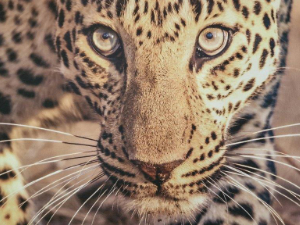
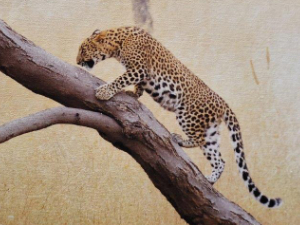
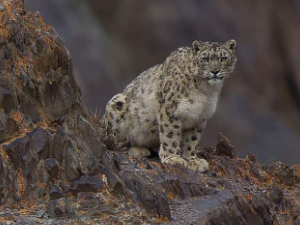
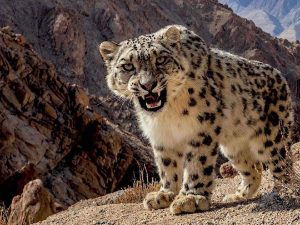
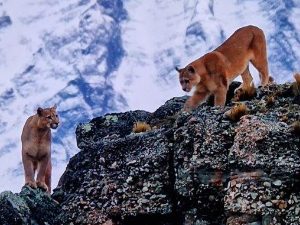
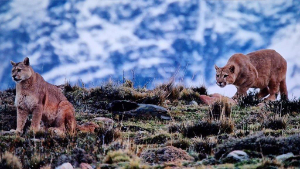

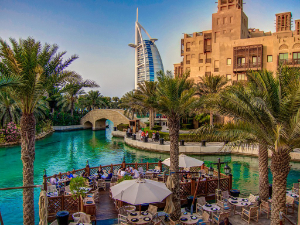


Focus on
Dear friends,
the new Focus on will allow you to read a detailed series of information on some of our most
particular trips: you can thus get a more precise idea of why and how these trips are built by our
team. Focus on will only focus on some of our travel proposals and our team will decide which
ones alone. During the year, the ones you can now see online can be alternated with other travel
proposals, always at the discretion of Wilderness.
Focus on
Tiger Expedition - INDIA
King Kong Kingdom - UGANDA
In the footsteps of the Leopard - INDIA and AFRICA
The Puma Triangle - CHILE
The pearl of the desert - DUBAI
TIGER EXPEDITION - INDIA
2022 was the Year of the Tiger and there was good news regarding the conservation of the big cat. According to the latest WWF report, "Impact on Tiger Recovery 2010-2022", the decline trend of tigers has finally reversed and bodes well. But while the total number of tigers in the wild is increasing, the distribution area has continued to contract and the tigers are now confined to an area equal to 5% of the historical range.
Some salient elements in the new report concern the birth in China of the largest protected area in the world dedicated to the tiger and of a national park in Russia, the land of the leopard, where the number of tigers has tripled.
In Bhutan's Royal Manas National Park, the use of the Spatial Monitoring and Report Tool (Smart) and other conservation measures have led to a doubling in the number of tigers since 2012. The report also features the Khata Forest Conservation Area, which has been transformed from just 115 hectares of forest to 3,800, involving more than 6,000 community members and land administrators. This cross-border corridor between India and Nepal, recently awarded for excellence in conservation, has been used by 46 tigers over the past five years.
"These advances deserve to be celebrated, but we must recognize that these are fragile and uneven milestones in all sub-regions of Asia: a dangerous decline in the number of tigers has occurred in Malaysia and Cambodia. In Laos and Vietnam. now these extraordinary felines are probably extinct, "points out WWF.
In the previous year of the Tiger, 2010, the Global Tiger Initiative was born and the first international meeting for tiger conservation, the St. Petersburg Tiger Summit, was convened. The event and initiative triggered an international collaboration between the governments of the 13 countries falling within the tiger's distribution range and the global conservation community towards a common goal for the recovery of the species. The crucial moment will be the second Global Tiger Summit on 5 September 2022 in Vladivostock, Russia. The heads of state and ministers of the countries involved will meet with other world leaders and with intergovernmental bodies, NGOs and conservation experts, to determine the next phase of the global tiger recovery plan. Among the possibilities is also that of setting a new ambitious target for the expansion of the area.
"Tiger Summit 2010" has set in motion an unprecedented series of tiger conservation initiatives - explains Stuart Chapman, leader of the Tigers Alive initiative - The results demonstrate what can be achieved through long-term commitments and partnerships for recovery The dedication of the field teams, conservation partners and communities living in tiger countries are behind these extraordinary results. " According to Margaret Kinnaird, leader of the WWF Wildlife Practice, "as we reflect on the decade of action to protect tigers, let's not forget that these extraordinary felines are still seriously threatened by poaching and habitat loss. The governments need to do more, efforts, particularly in parts of Southeast Asia."
Our trip in April 2022 was a success and we want to do it again in 2023, together with you,
because traveling is beautiful, but with Wilderness Experience it is more.
To see the tigers there are few sanctuaries in the world and the structures (shelters / camps /
lodges) have very limited receptivity.
Considering that the requests come from all over the world, it is very clear the need to finalize the
group as soon as possible.
For that we ask you to confirm quickly your participation.
Bookings will be registered with the date of receipt of your confirmations and once the limit number
will be reached, the group will be automatically closed.
The presence of our GM Stefano Sciarma, one of the most experienced professional guides in the
international field (see curriculum vitae on www.wildernessexperiencezimbabwe.com) will certainly
be a plus, since he was the one who conceived this trip.
The presence of our GM Stefano Sciarma, one of the most experienced professional guides in the international field (see curriculum vitae on wildernessexperiencezimbabwe.com) will certainly be a plus, since he was the one who conceived this trip.
The heart of this journey is there
BANDHAVGARH TIGER RESERVE
Our aim is to share an authentic and unforgettable escape where you can be one with nature and see the majestic Bengal tigers in a remote area of central India. It is located in the Bandhavgarh Tiger Reserve, in the heart of central India in Madhya Pradesh, which has the highest density of Royal Bengal Tigers in the world.
TIGER SAFARI
Bandhavgarh is famous for having the highest density of Bengal tigers in the world. We organize sunrise and afternoon safaris in our jeeps with English-speaking guides who are experienced in tiger detection and behavior. Your guides will also take you to places where you can see and hear many birds and other animal species. The entrance gates are Tala, Magdhi and Khitauli.
HISTORICAL SITES
Bandhavgarh National Park is named after the largest hill in the reserve. Located at the top of the
hill, dating back over 2000 years, it is one of the oldest forts in India, with more than 100 monolithic
caves originally used for the worship of Hindu monks and now inhabited by tigers! The Lord of the
Fort, Lakshmana, is still revered as a god in the fort.
Nearby, peaceful and serene in the Tala Desert is Sheshshaiya. This monolithic sandstone statue
of Lord Vishnu reclining on the seven-hooded serpent near a pool of water is worth a visit.
Other notes on BANDHAVGARH
"Bandhavgarh Tiger Reserve"
Bandhavgarh National Park is the best park to spot a tiger in the wild in India (and probably in the
world).
Located in the Umaria district of Madhya Pradesh, the park was a Shikargah, or game reserve for
the Maharajas of Rewa and their guests. The park was declared a National Park in 1968 and a
Tiger Reserve in 1972 under the Tiger Project and Wildlife Protection Act.
In 1982 three other nearby mountain ranges, namely Khitauli, Magdhi and Kallawah, were included
along with Tala (the original Bandhavgarh National Park) to form Bandhavgarh National Park.
While the buffer zone includes the forest divisions of Umaria and Katni. Bandhavgarh is famous for
one of the highest densities of Bengal tigers in the world. The park is synonymous with its original
and most famous inhabitant. "Charger", the first recorded healthy male resident in Bandhavgarh
since the 1990s, a tiger named Sita and Charger are the most photographed tigers in the world and
have appeared on the cover of National Geographic.
Charger died in 2000 and his body lies buried at Charger Point (A Tourist Spot), where he was
confined in old age.
Between 2003 and 2006, many of his descendants had a series of unfortunate ends.
B2 became Alpha Male after Charger's death. By mating with a female in the Siddhababa region of
Bandhavgarh, he sired three cubs. One of them was a boy, Bamera. He was first spotted in 2008 in
Tala and was the most famous and dominant tiger in Bandhavgarh until recently.
Blue Eyes and Mukunda are the dominant areas of the Magdhi and Khitauli Tigers respectively.
Popular tigers include Rajbehra, Mirchaini, Banbehi, Spotty, Sukhi Pattiya, and Damdama.
The parks are open from October 1st to June 30th each year. The high season to visit is from
October to March with often unbearable summer temperatures.
However, the months of March to June are ideal for better tiger sightings due to the drying out of
most of the vegetation in Bandhavgarh.
RESPONSIBLE TOURISM
“We firmly believe that we are part of the natural system not above it”
We believe that the local population is the vital key that can shape the future of
forests. Their participation, experience and ground-based expertise can help preserve wildlife. To
protect our forests, we enable them to improve their ability to earn a living and thereby help
improve their living standards. To ensure the prosperity of our natural habitats, we must respond to
their needs and concerns and be inclusive and symbiotic.
We continually strive to provide the best possible guest experience while integrating the
conservation of the jungles and the people living around the center. Although it is a drop in the
ocean, we believe we are slowly and steadily making a significant contribution to wildlife
conservation and the development and conservation of the rural economy in all of our lodges.
Minimize the environmental and ecological impact by choosing products of "ecological purchase"
and "energy conservation" to minimize the impact on the habitat, as much as possible in all our
lodges, by educating our staff. We hope to change the attitude of dozens of people working in our
various lodges and build an institutional culture.
Maximize impact by employing and sourcing locally whenever possible. Globally local is the axiom
by which we live. We encourage and educate our guests to take a look at indigenous skills, social
and cultural practices and their way of life through village visits and interactive sessions.
We passionately opt for locally grown and locally sourced food. Not only is it fresher, it supports
fringe farmers and local markets. In many of our huts we have an organic and herb garden for
fresh supplies. Our menus are designed to celebrate local ingredients and vegetables and are a
delight to your senses. Fresh, simple, local, regional and seasonal food is served in all our lodges.
We try to minimize the use of packaged and processed foods.
Option 1: 8 days
Option 2: 12 days with extension Varanasi and Agra (Taj Mahal)
To receive the program in detail and relative prices:
Call 349.3974860 or 333.2097430
Write to:
info@wildernessexp.it
stefanosciarma@gmail.com
KING KONG KINGDOM - UGANDA
On the occasion of the World Gorilla Day, which was celebrated on 24 September, WWF stressed
that mountain gorillas, after having reached the brink of extinction, are finally increasing in
numbers. At one time, these records were only 254 in the Virunga mountains, today there are over
1000 between Rwanda and Uganda and the key to success lies in the decisive fight against
poaching carried out in recent years. Overall today, conservation efforts to safeguard the mountain
gorilla continue to give good results, so much so that 4 years ago the species passed from
"critically endangered" to "endangered" in the risk categories of the IUCN.
Despite the increase in populations and the record of births recorded in 2021 (24 new cubs), the
species is still at risk. It is not just poaching that threatens the survival of these primates. Climate
change, the spread of diseases and deforestation are factors that can have serious impacts on the
residual populations of this fascinating primate.
Gorilla Tracking, or the monitoring of gorillas, is most likely the main activity for which you decide to
travel to Uganda.
Uganda, Rwanda and Congo are the three countries where it is possible to live this exceptional
experience allowing lucky pass holders to walk a few meters away and be able to see them in their
daily life (during which they generally eat or sleep! ).
It is a very expensive experience, but one that is worth every single penny.
Then consider that the economic proceeds brought by tourism also serve to finance the safeguard
mechanism that revolves around mountain gorillas: so take our word for it, they are money well
spent.
What is the best season for Gorilla trekking?
Although the monitoring of mountain gorillas can be done all year round in both Uganda and Rwanda, the dry season is generally preferred, ie from June to September and then from December to February (during small rains).
Where to see Gorillas in Uganda
There are two parks where you can do Gorilla tracking in Uganda: Bwindi Impenetrable Forest and
Mgahinga National Park.
Admissions are limited and it is therefore important, especially if you are traveling in high season,
to reserve your pass well in advance.
Currently the Uganda Wildlife Authority (UWA), the government agency responsible for tourism in
Uganda, issues 104 gorilla permits per day that allow you to visit 15 familiar gorilla families spread
over 4 sectors of the Bwindi National Park.
To these are added another 8 permits in the south of Bwindi where 2 families of gorillas live.
Mgahinga National Park hosts only 1 group and therefore only 8 passes are issued per day.
The demand for permits for gorilla trekking is very high in the peak seasons, from June to
September but also in the months of December, January and February.
All permits for gorillas are issued by the UWA offices in Kampala and cannot be purchased online,
making it necessary to rely on an operator such as Wilderness Experience.
Where to do Gorilla tracking in Uganda
Gorilla tracking is an activity that can only be done in four national parks in Africa: Bwindi
Impenetrable National Park and Mgahinga Gorilla Park in Uganda, Virunga National Park in Congo
and Volcanoes National Park in Rwanda.
Uganda is special because it hosts half of the remaining mountain gorilla population in two national
parks: Bwindi and Mgahinga.
Bwindi Impenetrable Forest National Park has been a UNESCO World Heritage Site since 1994
thanks to its great biodiversity.
In addition to mountain gorillas, the Bwindi is home to 120 species of mammals which include
small antelope, giant forest pigs, the African golden cat, the side-striped jackal and the African
civet. Here you could also see several primates such as the Chimpanzee, the Hoest's Monkeys
and Black / White Colobus Monkeys as well as 220 species of butterflies and 310 of birds.
Mgahinga National Park is Uganda's smallest national park and is located at the foot of 3 dormant
volcanoes. Unlike Bwindi, Mgahinga is an extension of the Virunga region and the largest
conservation area that includes the Virunga National Park in Congo and the Volcanoes National
Park in Rwanda.
The main attractions are the rare mountain gorillas and golden monkeys.
Why the Wilderness Experience team chooses the Bwindi Impenetrable Forest?
Bwindi Impenetrable Forest National Park (also called "The Place of Darkness" due to its dense
treetops) is an ancient forest that stretches for about 330 square kilometers. The region has been
named a UNESCO World Heritage Site since 1994 thanks to its incredible biodiversity and the
large number of endangered species that inhabit it. It is defined as an "impenetrable forest" due to
the fact that much of the territory can be reached with difficulty and only on foot.
About 45% of the living mountain gorilla population is found in Bwindi. It is a much larger park than
the Mgahinga and is home to more than 35 groups of gorillas, 15 of which are accustomed to
human presence and therefore can be visited with gorilla tracking.
The Mgahinga, on the other hand, has only one group of accustomed gorillas.
In Bwindi, gorilla tracking can be done in four different sectors of the park, each of which is home to
more than one group of gorillas.
Two groups in the sectors of Nkuringo and Rushaga allow you to participate in the Gorilla
Habituation Experience, accessible to only 4 visitors and the time allowed to be with the gorillas is
4 hours (against the time of simple gorilla tracking).
This experience can only be lived in Bwindi.
In truth, even the Mgahinga has some pros to take into consideration.
This park was avoided by operators for some years as the gorilla family used to move between
Uganda, Rwanda and Congo. Since 2013, however, she has returned to Uganda without moving,
so that currently sighting is very likely.
Clearly the possibility that one day they will come back to move exists and it is not possible to say
if and when it will happen.
Gorilla tracking in both Bwindi and Mgahinga can be tiring, as the trek takes place over rough and
steep terrain. However, there are differences between the two parks.
Due to their small size, the Nyakagezi group in Mgahinga is generally easier to spot than those in
Bwindi. However, as Bwindi is a huge forest, visitors may have to walk longer and make more
effort.
Those interested in taking pictures may want to know that the Mgahinga extends over a mountain,
not a forest, so on clear, sunny days, it's easier to take pictures given the best light.
Let's not forget that in this park you will find the 4 silverback brothers!
While at the Mgahinga during the tracking you could spot the Golden Monkeys, animals in danger
of extinction, at the Bwindi it is possible that you will meet the chimpanzees. So both offer
extremely interesting possible extras.
Bwindi National Park is strategically located just two hours from Uganda's largest and most famous
national park, Queen Elizabeth National Park. So if you are traveling following a classic travel route
then Bwindi is definitely the right choice!
On the other hand, trekking lovers will be happy to know that visiting Mgahinga here you have the
opportunity to go trekking on volcanoes. Uganda has three to choose from: Mount Muhavura,
Mount Sabinyo and Mount Gahinga. Reaching the top of one of these will offer incredible views of
Mgahinga National Park but also the chance to spot birds, forest mammals and primates such as
golden monkeys.
How much does the Gorilla Tracking permit cost?
Currently the Gorilla tracking pass costs US $ 700 per person.
Once in the low season the passes had discounted prices, and since 2018 the cost has been fixed
regardless of the season and the age of the participant.
The permit is valid only for one day and if no gorillas are sighted, no refunds or the possibility of
trying in the following days are granted.
Bwindi issues 104 permits per day. The Mgahinga only 8, which is why it is very important to book
your pass well in advance to secure one of the very few permits. It is recommended to book at
least 10 months in advance if traveling in high season.
The minimum age for gorilla tracking is 15 years.
Tracking is prohibited if you are affected or ill. It is not possible to smoke in the park and it is
forbidden to use the torch or make unnecessary noise in the presence of the gorillas.
The Gorilla Habituation Experience instead costs US $ 1500 per person and the permits are only 4
per day
Gorilla Trekking is hard to do? How many hours does it take?
Mountain gorillas live in high altitude areas so the trek to reach the family is potentially strenuous.
Bwindi is a forest with dense undergrowth, thorny bushes and shrubs that make it difficult to pass,
the soils are often wet and slippery.
Mghinga extends over the mountains and the search often leads to altitude, so it is advisable to go
trekking with mountain sticks to help you climb.
It is impossible to say how long it will take to locate the family, some people take 1 hour, others 3
and others a whole day. It all depends on the position at the time of the gorilla family which when it
moves it does so rather quickly.
It is good to remember, however, that every day the trackers reach the park at 6 in the morning,
look for families and with walkie-talkies they communicate the position to the rangers and guides in
order to direct the group of tourists to the place they like.
Is the sighting guaranteed?
When it comes to animals, no one can guarantee any, but generally 99% of visitors encounter
Gorillas.
The reason why the 1% failing is usually due to the fact that they cannot keep up with the trek and
prefer to return to the starting point.
The trek lasts variable hours and the times to reach the family depend on the case of the
day.MoreMore
More
If the cost of the pass is too expensive but you are interested in primates, then consider taking part
in the chimpanzee tracking, US $ 150 per person, which is just as fun and rewarding. If you believe
these costs are too high, remember that by paying for the passes you are actively contributing to
the conservation of these wonderful animals. Another reason that justifies the high rate of this very
exclusive activity.
It is expensive, it is complicated and it is tiring, but once you get within a few meters of these
wonderful creatures, all the hardships pass. And the available hour flies.
Sitting in silence for 60 minutes on the cold ground of a Ugandan forest could be one of the
greatest privileges and one of the emotions that can hardly be forgotten in life. There are just over
1,000 mountain gorillas, and trekking in search of these primates offers a rare opportunity to
observe the daily interactions of these docile, gentle and mysterious animals.
The mountain gorillas
The gorilla is the largest living primate and belongs to the family of anthropomorphic apes, that is,
those closest to man from an evolutionary point of view, after the chimpanzee and the bonobo.
They are massive animals with broad chest and shoulders, large hands, forearms much shorter
than the upper arm. The face is black and hairless, with small, close eyes and large prominent
nostrils.
The only two species of gorilla both live in Africa and are divided into western gorilla and eastern
gorilla. The western gorilla is in turn divided into two subspecies: the lowland gorilla, with a greater
number of specimens, which lives in Angola, Cameroon, Central African Republic, Congo,
Democratic Republic of the Congo, Equatorial Guinea and Gabon and the Cross River gorilla,
minority with respect to the previous one in terms of number of specimens, which lives on the
border between Cameroon and Nigeria. The eastern gorilla, on the other hand, lives in the
Democratic Republic of Congo, Rwanda and Uganda, and is, in turn, divided into two subspecies,
the mountain gorilla with just over 1000 specimens and the lowland gorilla.
The mountain gorilla is a highly social animal that lives in groups that can have from 5 to 50
individuals and that have a precise hierarchical order headed by a dominant silverback male, so
named for the characteristic silver color of the hair on the back.
It is distinguished from other gorillas by its longer and darker hair, which assumes the characteristic
silvery gray color on the back of adult males. Males can weigh between 140 and 180 kg, while
females usually weigh between 70 and 110 kg.
They are considered diurnal and terrestrial animals; even if they are able to climb trees, they are
the best adapted primates to life on the ground. They move essentially on all fours, but they can
also travel short distances in an upright position on two legs, just like humans.
Gorillas are mainly vegetarians and spend about 30% of the day eating stems, bamboo shoots and
fruit, as well as bark. Another 30% of the time they spend moving or eating while on the move and
40% they spend resting. An adult male can eat over 30 kg of plant food in a day while a female can
consume about half.
For many years now, the Wilderness Experience team has been organizing trips to Uganda and
Rwanda by including mountain gorilla tracking as the main attraction.
If you are interested in participating in our next “King Kong Kingdom”, know that you need to book the trip and the relative permits for tracking in advance.
So you must quickly to decide about your participation!
Contact us by phone 349.3974860 o il 333.2097430
Write an email to:
info@wildernessexp.it
stefanosciarma@gmail.com
In the footsteps of the Leopard - INDIA and AFRICA
Jhalana Leopard Reserve - INDIA
The Wilderness Experience team dedicates specific safaris to this beautiful feline in this small reserve that has about 45 specimens in just over 20 km2. It is located near Jaipur, the pink city of Rajasthan, about 260 km from Delhi and can easily be included in both the Tiger Expedition program and the Classic India program.
“Ghost” - Ladakh - INDIA
If you are in perfect shape, you don’t suffer from the cold and heights and you are looking for new challenges, this challenge with wild nature is the trip for you, in search of the most elusive ghost in the world, the mythical snow leopard.
Okavango Delta, Chobe N.P. and Matobo Hills - BOTSWANA and ZIMBABWE
Of course we do not forget our safaris in Africa, where the leopard is present in Botswana in the Chobe National Park and in the Okavango Delta and in Zimbabwe in the Matobo Hills.
Write an email to: info@wildernessexp.it
The Puma Triangle - CHILE
For nature photography enthusiasts and lovers of big cats, but also as a complement to a trip to Chile or Chile/Argentina.
The Puma, also known as the "Mountain Lion" is a generally solitary animal, but in some areas of Chile it is possible to see it in small groups, a sign that it can still be a social animal. The vast Patagonian steppe, inside and outside the Torres del Paine National Park, in south-eastern Chile is certainly a privileged area for the research and observation of these splendid animals that are found here in high concentrations, especially due to the abundant presence of guanacos that are their main prey.
Guanacos are herbivores belonging to the Camelidae family (present in Peru, Bolivia, Argentina and indeed Chile). An adult can weigh about 90 kg and can run up to just under 60 km on steep mountain terrain.
However, these are not easy prey for pumas, as Guanacos use lookouts to scan the territory from panoramic points and in the presence of the feline, they emit a typical alarm sound to warn their companions of the danger.
Often in the absence of hiding places that make it easier to approach the prey, the Puma must move slowly and silently to approach the Guanaco within a range of less than ten meters that then makes the attack possible.
Observing the Pumas in such a wild, remote and fascinating natural context is certainly a Wilderness Experience.
This exclusive excursion can last up to 4 days and, as mentioned, can be a natural extension of trips to Chile and Argentina, particularly to Torres del Paine National Park in Chile and Perito Moreno National Park in Argentina.
All in the context of a trip to some of the most extraordinary places on our planet.
Write an email to: info@wildernessexp.it
DUBAI "the pearl of the desert"
All the charm of Dubai and the United Arab Emirates with high quality services that make all the difference, through our Wilderness in Dubai operational office.
A total full immersion that allows you to choose between many fantastic different options for every type of need.
- Tailor made tours in Dubai
- Excursions in Abu Dhabi and other fascinating places of the United Arab Emirates
- Abu Dhabi Formula 1 GP
- Extensions in Qatar and Oman
- Supercar rental
- Viewing and purchasing apartments in Dubai
- Yacht Tour
- Teatro La Perla show
- Incentive
- Business travel
Per info scrivere a info@wildernessexp.it
© Wilderness Experience Tour Operator - wildernessexperience.eu - wildernessexp.it - vip-italy.com
